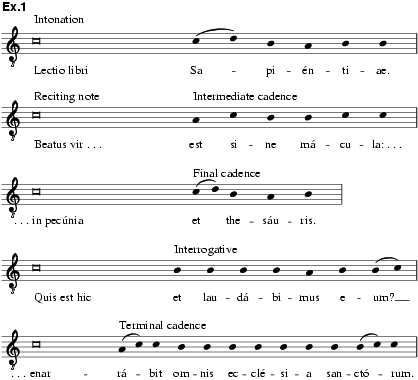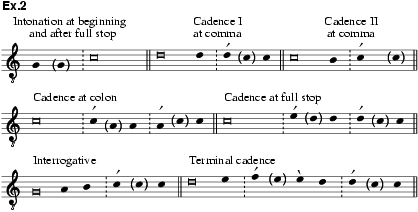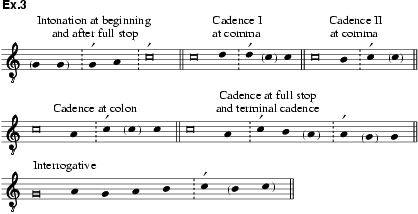
(from Gk. epistolē and Lat. epistola: ‘letter’).
Generic term for the reading or readings that precede the Gospel in the pre-eucharistic synaxis of the Eastern and Western liturgies. The term derives from the fact that the Epistle is frequently taken from one of the epistles of Paul, but it is nonetheless applied to other scriptural readings, too, including those taken from the Old Testament. Similarly, the term ‘Apostolus’, a reference to the ‘Apostle’ Paul, was frequently used in patristic literature to refer to the Epistle.
It remains a safe assumption that the early Christian practice of liturgical reading from the Bible was a continuation of what took place in the Jewish synagogues. The earliest description of a pre-eucharistic synaxis, that of Justin Martyr (d c165), mentions both New and Old Testament readings: ‘the memoirs of the Apostles and the writings of the Prophets are read as long as time permits’ (First Apology, 67). Two other common assumptions about the Epistle, however, have come to be seriously questioned: that Epistles were at first read according to the system of lectio continua; and that all ancient liturgies had at least two readings, one each from the Old and New Testaments.
There is little positive evidence to support the belief that lectio continua or scriptura currens – the resumption of the reading of a text from the point where it had been discontinued at the previous service – was the standard Christian practice before the growth of the liturgical year inspired the development of a Proper cycle of readings. Readings were selected each day at the discretion of the presiding bishop, and it is at best only a plausible hypothesis that the bishop might have made his choice according to some variation of lectio continua. Certainly, at a time when the biblical canon had not yet been fixed and Christians tended to think more in terms of individual books or groups of books than a unified Bible, it is less likely that the entire Old or New Testaments would have been read in this way than individual books.
Even less tenable is the assumption that one of two related patterns of readings was standard in all ancient Christian liturgies: either the four-reading system of two Old Testament pericopes, modelled after the Synagogue practice of one reading from the Law (the Pentateuch) and another from the Prophets, along with a symmetrical pair of New Testament readings, one from the epistles of Paul and one from the gospels; or the simplified three-reading system of Old Testament, New Testament and Gospel. The medieval Roman and Byzantine systems of only two readings, an Epistle and a Gospel, came about, according to this view, by a reduction of the ancient plan. Analysis of the 4th- and 5th-century literature has shown that no such rigid patterns prevailed at the time (Martimort, 1984 and 1992). Rather there was variety from place to place in the number and type of readings, and indeed variety within the same location from one liturgical occasion to the next. Most instructive in this respect is the so-called Armenian Lectionary, which provides the early 5th-century readings of Jerusalem (see Renoux). The most common pattern was that of two readings, one each from the Pauline epistles and the gospels; this was employed, for example, in most festivals of the Temporale, while Old Testament saints and the Virgin Mary had a three-reading group beginning with one from the Old Testament. St Augustine, another rich source of evidence, usually cited just two readings in his sermons: one from the Old Testament, or more often the ‘Apostle’, and a second from the gospels; while the contemporary Apostolic Constitutions (II, 57.5–9 and VIII, 5.11–12) call for at least four, beginning with ‘the Law and the Prophets’.
There is an argument of special interest to music historians that has frequently been invoked to support the position that multiple Epistles prevailed in all the ancient liturgies; it rests on the dual assumption that a psalm in the pre-eucharistic synaxis always served as a lyric response to a reading and that in the early Church there were always two psalms sung during this service. A careful reading of the patristic literature, however, reveals that both aspects of the assumption lack a factual basis. There are occasional references to more than one psalm, but usually one only is mentioned. Never is a psalm described as a response to a reading: rather it is spoken of as an independent reading itself. Augustine’s comment in Sermon 165 is typical: ‘We heard the Apostle, we heard the Psalm, we heard the Gospel: all the divine readings sound together’.
As Proper Epistles came to be assigned to dates in the expanding Church year, it became necessary to record them in writing. The same roughly three-step process observed with Gospels applies equally to Epistles: markings in the margins of biblical texts; lists (capitularia) of Epistle incipits and explicits; and books with fully written out pericopes, that is, epistolaries (see Gospel, §2). The second type, the capitularium epistolarum, did not have the benefit of a system of numerical divisions such as the Gospel’s Eusebian sections or canons, and simply had to rely on the title of the book with incipit and explicit.
Among the Latin liturgies the quantity of early evidence is substantially greater for Gallican readings than it is for Roman ones. Most of the Gallican evidence conforms to the threefold scheme of Pseudo-Germanus: Prophetia – Apostolus – Evangelium. Gallican lectionaries, however, differ among themselves as to specific readings, and the Gallican system was supplanted by the Roman in the Carolingian liturgical reforms of the late 8th century. In the Würzburg Epistolary, Roman Epistles appear to have been largely fixed; readings for about 625 are provided: the Epistles of Paschal Time are drawn from the Acts of the Apostles and the Catholic Epistles, Lenten Sundays from the Pauline epistles, and Lenten weekdays from the Old Testament; Christmas Time festivals chiefly from the Pauline epistles and the prophet Isaiah. There are no assignments for the Sundays after Pentecost, but these were presumably chosen by the celebrant from the series of 42 unassigned pericopes from the Pauline epistles that appear at the end of the lectionary.
The recitation tone of the Epistle was often notated in full in later tonaries, or in collections of common tones such as the Cantorinus (Venice, 1540) or the Compendium musices (Venice, 1509). Older lectionaries and epistolaries sometimes included accents or neumes, in black or red ink, indicating the syllables on which the memorized cadence formulae were to begin. In all these various sources the recitation tone consists of a single reciting note (‘tenor’) bounded by an intonation formula and a concluding formula. The middle of the period is marked by a colon or semicolon, indicating an intermediate cadence; the end of the period, marked by a full stop, bears the final cadence (metrum). If a phrase is interrogative, the cadence is inverted and the melody rises. An ornamented terminal cadence (finalis) concludes the recitation. (See ex.1; for regional variants, see MGG1.)

The traditional recitation tones were retained in the German Lutheran Church while Latin was still in use. In Luther’s Deutsche Messe of 1526 (ed. J. Wolf, Berlin, 1934) the normal recitation tones were replaced by a kind of psalm tone whose cadences were chosen according to the punctuation of the text (ex.2). At the end of the Deutsche Messe, however, Luther proposed another recitation formula (ex.3), which, according to a letter he wrote to Justus Jonas on 2 February 1526, he preferred to the other. The first of these tones spread through central Germany and Saxony; the second, less widespread, is found in the lectionary of Brunswick (1620) and in the Kirchengesänge (Wittenberg, 1573).


For some time the Anglican Church retained the recitation tone used in the English Church from the reform of the Sarum rite in 1197 by Richard Poore and Edmond Rich. The first Prayer Book, published under Edward VI in 1549, required all the readings to be sung in English to a ‘plane tune’, with ‘distinct reading’ so that the people might understand the text. This passage was omitted from the second Prayer Book of 1552, but the previous usage seems nonetheless to have been maintained. In the 19th century, under the influence of the Oxford Movement, unofficial works such as the Priest Music proposed a return to the Roman, or to the Sarum, manner of recitation.
From the 12th century but particularly in the 13th, missals, especially French ones, sometimes contain farsed Epistles, that is, Epistles whose text has been expanded with explanatory glosses or commentaries in Latin or, on occasion, in Old French. Such Epistles were generally written out in full because of the difficulty fitting the recitation tone, usually divided between two deacons, to the extra non-biblical text. They solemnized the feasts for which they were prescribed, and the dramatic element they brought to the liturgy may well have influenced the early development of medieval drama. Their most notable occurrence is within the Christmas cycle, which grew more elaborate during the Middle Ages through the inclusion of popular customs. On Christmas Eve the chant of the Sibyls, Laudes Deo dicam per secula, was read (ed. in Blume, 1906, p.173, no.384; see Villetard, pp.111, 168), a practice still found in some churches in Catalonia (see H. Anglčs: La música a Catalunya fins al segle XIII, Barcelona, 1935/R, p.288) and Portugal (see S. Corbin: Essai sur la musique religieuse portugaise au Moyen-Age, Paris, 1952, p.285).
The dramatic element of the farsed Epistles was further developed in polyphonic Epistles, which seem to have originated as a result of dividing up the reading of the Epistle among several readers (e.g. the Christmas genealogy in F-Pa 438 from St Martin-des-Champs; see Gospel, §3(ii)). At Christmas, lessons were sung in polyphony both at Matins and during the Mass. The prophetic lesson Populus gentium, for example, prescribed for the first nocturn of Matins and, in some areas, also for the midnight Mass (notably in the lectionary of Alcuin), was sung polyphonically particularly in Germany (see Göllner, i, pp.297ff). Other polyphonic Epistles from the Christmas cycle survive uniquely in I-IV 71 (see Göllner, i, pp.162, 166, 335); the Epistle In omnibus requiem quaesivi for the Assumption (15 August) is set in two-voice polyphony in the St Martial troper and proser F-Pn lat.1139 (see Göllner, i, pp.176, 336 and pl.xix). Some other isolated polyphonic Epistles survive, notably for the Dedication of a Church (see Göllner, i, pp.172, 336).
These polyphonic Epistles may seem anomalous, since lessons are normally by definition recitations chanted by a single singer; but polyphony was regarded as a form of ornamentation or enrichment in order to render the monophonic chant (and a fortiori the simple liturgical recitative) more solemn.
MGG1 (B. Stäblein, C. Mahrenholz)
MGG2 (E. Jaschinsky, J. Stalman)
J.W. Lyra: Deutsche Messe (Gütersloh, 1904)
G. Vale: ‘Una epistola farcita per la festa della Dedicazione della Chiesa’, Rassegna gregoriana, iii (1904), 401–6
C. Blume: Analecta hymnica medii aevi, xlix (Leipzig, 1906/R)
M. Sablayrolles: ‘Un’antica epistola farcita per la festa di Pasqua’, Rassegna gregoriana, vi (1907), 109–14
H. Villetard: Office de Pierre de Corbeil (Office de la Circoncision) improprement appelé ‘Office des Fous’ (Paris, 1907)
Graduale sacrosanctae romanae ecclesiae (Tournai, 1908/R), Toni communes, iii
D.G. Morin: ‘Le plus ancien comes ou lectionnarie de l’église romaine’, Revue bénédictine, xxvii (1910), 41–74
P. Wagner: Einführung in die gregorianische Melodien: ein Handbuch der Choralwissenschaft, iii: Gregorianische Formenlehre: eine choralische Stilkunde (Leipzig, 1921/R), 37–82
G. Godu: ‘Epître’, Dictionnaire d’archéologie chrétienne et de liturgie, ed. F. Cabrol and H. Leclercq, v/1 (Paris, 1922)
H. Grisar: Das Missale romanum im Lichte römischer Stadtgeschichte (Freiburg, 1925)
F. Blume: Die evangelische Kirchenmusik (1931, rev. 2/1965 as Geschichte der evangelischen Kirchenmusik; Eng. trans., enlarged, 1974, as Protestant Church Music: a History)
W.H. Frere: Studies in Early Roman Liturgy, iii: The Roman Epistle Lectionary (Oxford, 1935)
A. Wilmart: ‘Le lectionnaire d’Alcuin’, Ephemerides liturgicae, li (1937), 136–97
J.A. Jungmann: Missarum sollemnia: eine genetische Erklärung der römischen Messe (Vienna, 1948, 5/1962; Eng. trans., 1951–5/R as The Mass of the Roman Rite)
G. Kunze: ‘Die Lesungen’, Leiturgia, ii (1955), 87–180
G. Willis: St. Augustine’s Lectionary (London, 1962)
K. Gamber: Codices liturgici latini antiquiores (Fribourg, 1963), 192ff; ii (Fribourg, 1968), 429ff
C. Vogel: Introduction aux sources de l’histoire du culte chrétien au Moyen Age (Spoleto, 1966/R; Eng. trans., rev., 1986, as Medieval Liturgy: an Introduction to the Sources), 239–328
G. Stefani: ‘La recitazione delle letture nella liturgia romana antica’, Ephemerides liturgicae, lxxxi (1967), 113–30
T. Göllner: Die mehrstimmigen liturgischen Lesungen (Tutzing, 1969)
A. Renoux: Le codex arménien Jérusalem 121 (Turnhout, 1969–71)
F. van de Paverd: Zur Geschichte der Messliturgie in Antiocheia und Konstantinopel gegen Ende des vierten Jahrhunderts (Rome, 1970)
A. Zwinggi: ‘Die fortlaufende Schriftlesung im Gottesdienst bei Agustinus’, Archiv für Liturgiewissenschaft, xii (1970), 85–129
A. Zwinggi: ‘Der Wortgottesdienst bei Augustinus’, Liturgisches Jb, xx (1970), 92–113, 129–40, 250–53
A. Chavasse: ‘L’epistolier romain du codex de Wurtzbourg: son organisation’, Revue bénédictine, xci (1981), 280–331
A. Hughes: Medieval Manuscripts for Mass and Office: a Guide to their Organization and Terminology (Toronto, 1982)
A.G. Martimort: ‘A propos du nombre des lectures ŕ la messe’, Revue des sciences religieuses, lviii (1984), 42–51
P. Kannookadan: The East Syrian Lectionary: an Historico-Liturgical Study (Rome, 1991)
A.G. Martimort: Les lectures liturgiques et leurs livres (Turnhout, 1992)
For further bibliography see Gospel and Mass.
MICHEL HUGLO, JAMES W. McKINNON